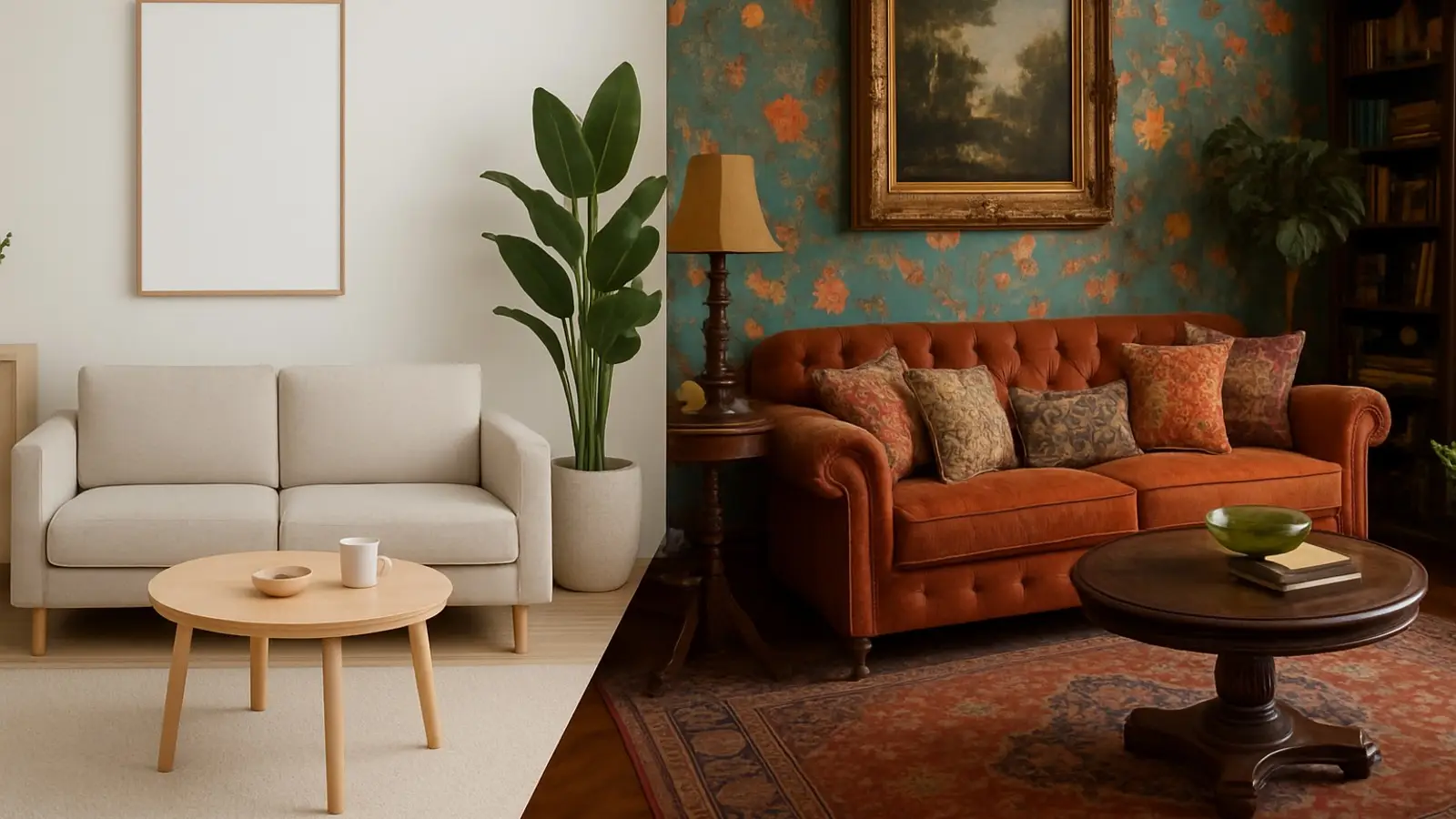Minimalism vs Eclecticism: Choosing Your Interior Style for a Cozy Home
Explore minimalism and eclecticism in interior design—key traits, comfort tips, and ways to blend both. Learn how to choose a cozy, balanced home that fits you.

Generated by Dall-e
Choosing an interior style isn’t just about looks; it reflects how you live. Some people crave visual clarity and order. Others lean toward warmth and the sense of a place buzzing with life. Two popular routes—minimalism and eclecticism—offer almost opposite strategies for creating comfort. Here’s what sets them apart and how to decide what fits you.
What Minimalism Means
Minimalism is a bid for simplicity. Think clean lines, a neutral palette, and a firm “no” to excess décor. Function comes first, and every object has a purpose and a spot.
The aim is to clear out the nonessential so a room can “breathe.” Light walls, very few pieces of furniture, and concealed storage create a feeling of order and calm. This approach works especially well in compact city apartments: it makes spaces look larger and makes cleaning easier. The trade-off? Minimalism demands careful choices. With the wrong materials or colors, a room can tip from serene to cold and lifeless.
What Eclecticism Brings
Eclecticism, by contrast, embraces freedom. It mixes styles, eras, colors, and textures—perhaps a vintage armchair beside a modern lamp and an ethnic rug. The key is harmony, not uniformity.
This style lets personality lead. There are no strict rules, which suits people who build a home over time—bringing back finds from trips, using antiques, and pairing the old with the new. Still, it calls for restraint. Without a unifying idea and a considered color scheme, the result can slip into visual noise.
Comfort, Two Ways
Ask ten people what “cozy” means and you’ll hear different answers. If comfort, to you, is visual quiet—cleanliness, order, and ease—minimalism has the edge. It creates a sense of lightness and helps you focus and unwind.
If comfort is a rich atmosphere—details, memories, and bold accents—eclecticism delivers. It lets you surround yourself with pieces that carry stories, add vivid colors, layer textiles, and bring in tactile surfaces.
Lifestyle matters, too. If you value structure and a sense of mental ease, minimalism will feel natural. If you enjoy experimenting and don’t shy away from variety, eclecticism will likely fit better.
Can You Mix Them?
More and more designers combine both. One common tactic is to keep the base minimal—subtle walls, neutral floors, functional furniture—and then introduce eclectic accents: artwork, rugs, and character pieces.
This compromise yields a space that’s both balanced and alive. It isn’t overloaded with detail, yet it feels personal and warm.
The Takeaway
Minimalism and eclecticism are opposing approaches, and either can be cozy. It depends on how you define comfort and what resonates with you. One favors order and lightness; the other, freedom and expressiveness. Both are valid—and sometimes they’re best together.
If your goal is to clear space and lighten your head, lean toward minimalism. If “cozy” means a personal story told through many details, try eclecticism. Most of all, listen to your own sense of home—and don’t be afraid to experiment.
